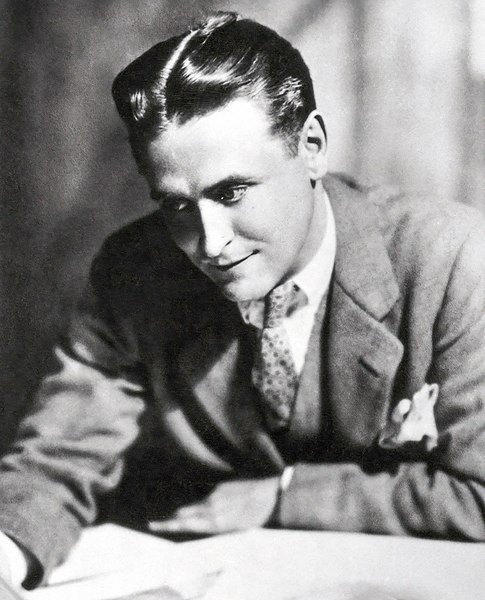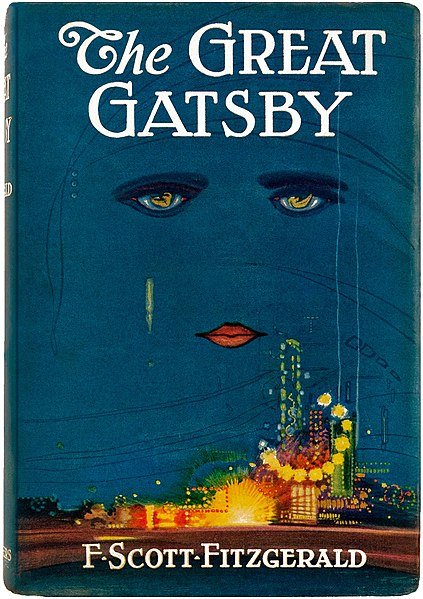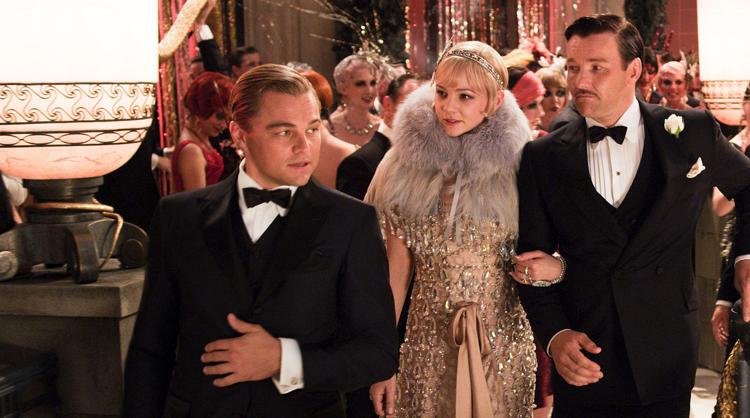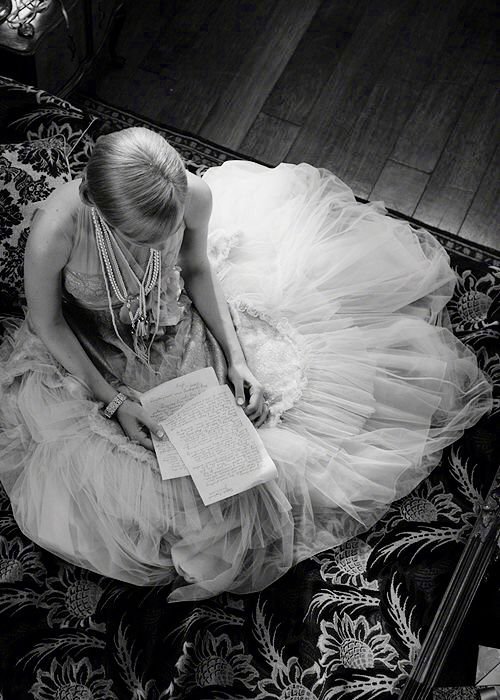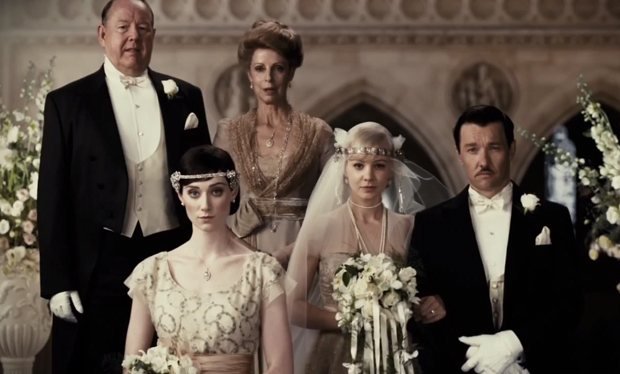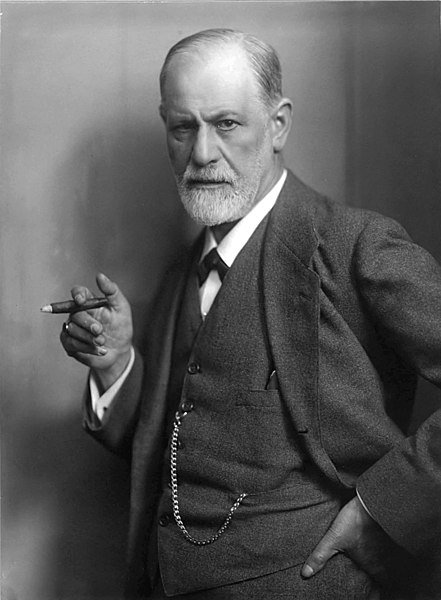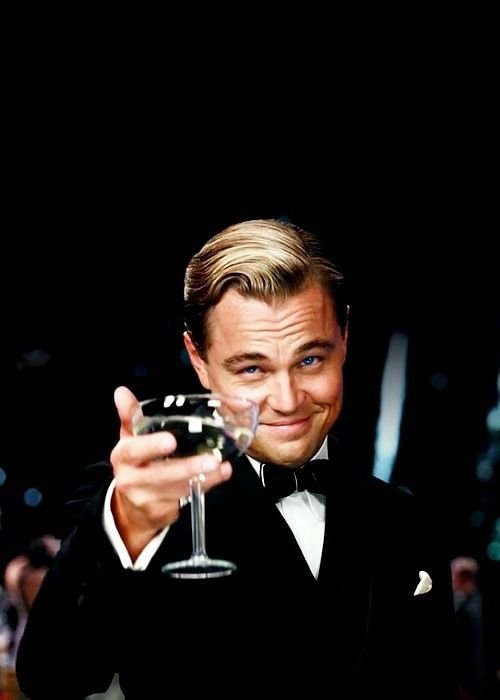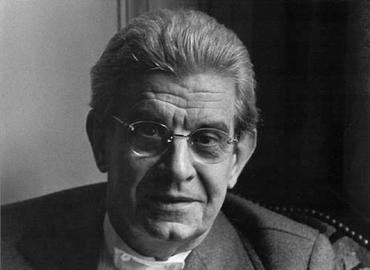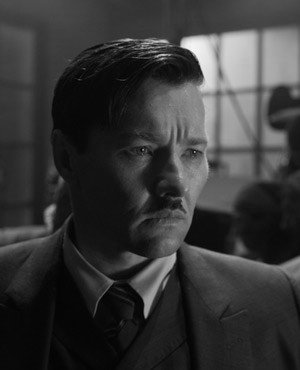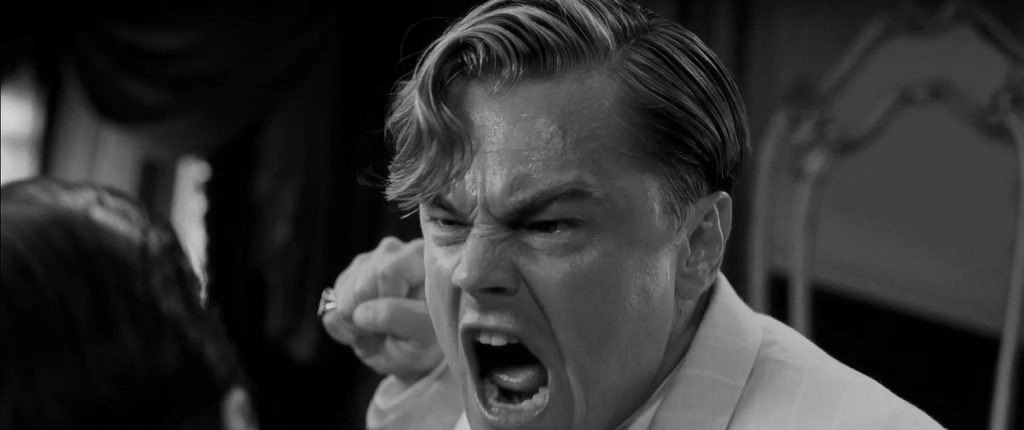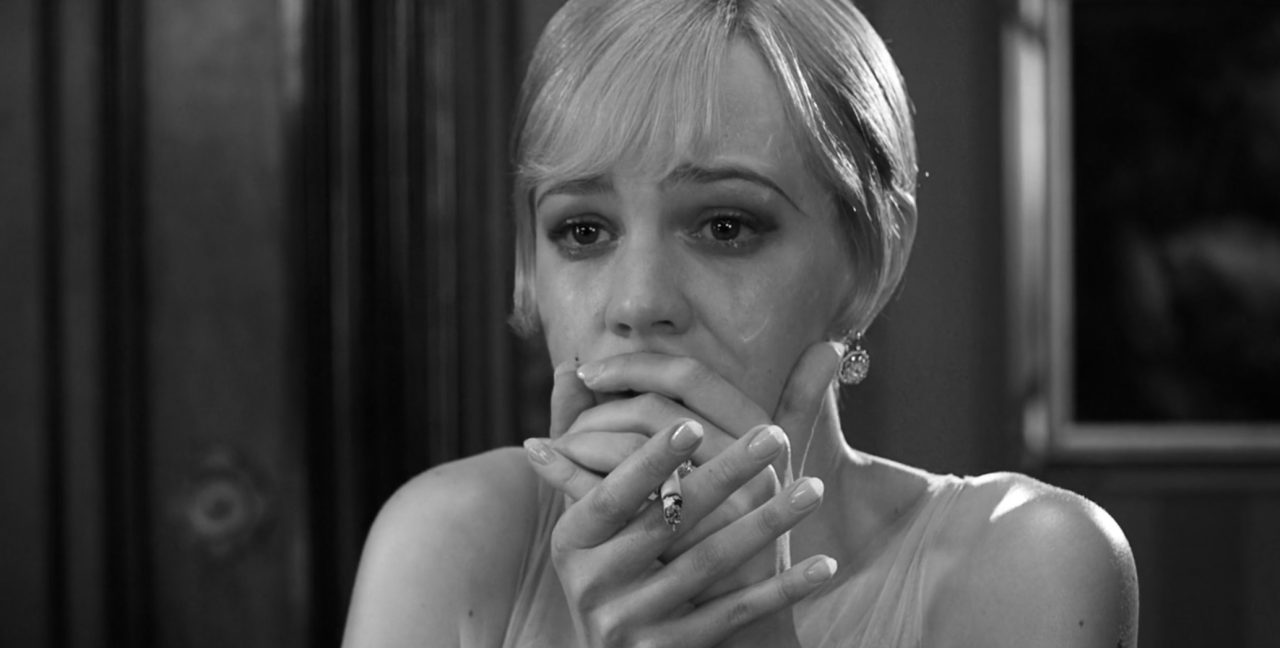The Great Disillusion
There is no doubt that F. Scott Fitzgerald explored the fate of the 1920’s American Dream both beautifully and stylishly, in his 1925 classic novel, The Great Gatsby. The novel is narrated by Nick Carraway who reveals the events which unfolded in the summer of 1922. His story follows the interactions between the trio Tom Buchanan, Daisy Buchanan, and Jay Gatsby, as each grapple with internal and external conflicts. To summarise: the wealthy Jay Gatsby (shoutout to Leonardo DiCaprio) remains a mystery until an elaborate scheme to win the affections of his one true love (swoon) Daisy, is revealed. As a romantic drama, I found the novel to be though-provoking and despondently accurate in its depiction of society, relationships, and the failed American Dream. The polarities of this ideal; “success and failure, illusion and disillusion, dream and nightmare” (Callahan, n.d.) are embodied through the interactions and relationships of Fitzgerald’s characters. I believe the narrative serves as a window into the affairs which led to the demise of this idealistic belief. Not unlike other classic novels, The Great Gatsby explores the failed American Dream through a study of class and values. Consequently, the relevant destructive forces appear to be issues such as materialism, corruption, and social stratification. My accompaniment to this view is that these forces were fuelled by the unconscious fears and desires of society, so my approach to this evaluation will be grounded in both Marxist and Psychoanalytic criticisms.
Marxist Approach
It is clear that the historic setting of the text casts a lens over the faults of human nature in a most extravagant fashion. I found it fitting that Fitzgerald’s representation of the death of the American Dream be as bold as the explosive event which started it all – the economic boom. Stage setting: a Republican government and an economy favouring big business. Cue: Marxism. This frenzy of ‘opportunity’ was the defining moment of the American Dream, yet despite the efforts of a national definition, this ideal seems to have been demarcated by individual pursuits of happiness and success. For the capitalists, this success may be understood as “the attainment of a high income, a prestigious job, economic security” (Hochschild 1950, p15) and (as a Marxist insight may posit) any ‘thing’s’ relationship to this consumerist society (Tyson 2006, p62). This capitalist nature gives rise to both material objects and people adopting the role of a commodity in this inter-societal exchange process. Though sexism may have been rife in this era, there is no denying that a woman of the 1920s is a historically ‘new woman’. Their innovative role in society can be observed in politics, the home, the workplace and in education. Thus, women’s equal part in this post war America can be expected (Benner, 2004). With this new breed of Western woman fashioned in short skirts and shorter hair, I will assume that she is an equally eager participant in the exchange process of various commodities, even when she herself is acting as a commodity to her husband. Back to the topic at hand – whilst is I could reason that Gatsby’s intentions were pure, I will demonstrate how each character in the novel had a motive in this consumerist game in order to pursue the American Dream, or what they defined as such.
Psychoanalytic Approach
In conjunction with the intersocietal and interclass relations, the motivations and fears of Gatsby, Daisy and Tom are critical factors to consider when studying the fate of the American Dream. Marx, meet Freud. Sigmund Freud, known as the father of psychoanalysis, was arguably “the first thinker to apply deterministic principles systematically to the sphere of the mental” (Thornton, n.d). Freud’s theory of the unconscious insists that behaviour should be analysed in terms of the causes or unconscious processes of the individual in question. Therefore, when considering the actions of Daisy, Tom, or Gatsby, we can understand the source of their motivation by analysing their actions psychoanalytically. In a literary text that explores human behaviour, gaining an understanding of the subliminal operations of an individual’s internal world reveals concepts relevant to human nature and the human experience more broadly. Particularly in The Great Gatsby, I would like to emphasise the psychological motivation for the destructive behaviour of the characters (Tyson, 2006, p15). After all, it is the corrupted, lying, or manipulative behaviour that I would argue thwarted the realisation of the American Dream. As the anxieties of the characters are revealed, so too are their consequent defences. These defences formed the identities of Daisy, Tom and Gatsby in order to protect them from their true fears of loss and abandonment. Where Freud and Marx again fuse quite beautifully is that these psychological fears are driven by the yearnings of the Roaring Twenties which lead to a society essentially working against the American Dream.
Money, Money, Money
As a result of the capitalist nature of the 1920’s, many of these innate worries and wants of the individual are replicated throughout the collective, which promotes a brutal exchange system where the objective is ultimately a materialist pursuit of wealth and status. In The Great Gatsby, this can be analysed using Marxism, the literary school of thought developed by Karl Marx, which explores the effects of class systems and the economic or political program (Chambre, 2015). This perspective suggests that socioeconomic classes divide a society into what is essentially described as the ‘haves’ and ‘have-nots’ (Tyson, 2006, p54). Tom and Daisy clearly have all the luxuries of an upper-class couple such as servants, money, property, and status. Gatsby was revealed not to have a cent until his mysterious wealth allowed him to possess the materialistic objects which promoted him to upper-class. This idea of class influence and unconscious motivations is evident in Daisy, Tom, and Gatsby through each character’s relationships with each other and their relationship with the American consumerist society. Each aspect of these individual’s motivations and actions are evidence as to why human nature destroyed the American Dream.
Consider that the American Dream is in fact not a hopeful ideal, or the punchline of a motivational speech, but an entire ideology or belief system. Such a delusion that anyone may achieve success through initiative or hard work blinds people to their own flaws of greed and fear. A Marxist approach would suggest that the success of the American Dream relies essentially on the misery of many for few to acquire great wealth (Tyson, 2006, p58). Founding father, Karl Marx, states that “the history hitherto existing society is the history of class struggles…in a word, the oppressor and the oppressed” (Marx, 1848, p14). This struggle exists between what is known as the bourgeoisie (modern capitalists) and the proletariat (working class) which is effectively portrayed through characters in the novel. Tom and Daisy embody the bourgeoisie and to an extent, so did Gatsby before he was revealed as a fraud. Indeed, to acquire the wealth or the success that the American Dream boasts of, individuals must trade in a consumerist market where commodities are bought, exchanged, or sold. Or in Gatsby’s case, participating in organised crime (just like my favourite gangster: Tommy Shelby). This game is most often concerned with the bourgeoisie who have the means and power to successfully participate as key players in the economic system.
It is essential to remember that the value of a commodity is not only monetary whereby the item in question has a use value or exchange value, but any object, person or thing may express a significant sign-exchange value (Tyson, 2006, p62). In the text, the Buchanan’s reside in East Egg which is known as the more fashionable of the two eggs of land, in a “Georgian Colonial mansion”, with a lawn which “started at the beach and ran towards the front door for a quarter of a mile” (p12). Tom, who is known to have been enormously wealthy even in his college days, has clearly adopted the attitude that money is power, and one requires a commodity with a significant sign-exchange value which will reinforce this desired social status to your peers. Karl Marx scrutinised the effect that capitalism has on human values, and my romantic soul would have to humour this view when I consider the Buchanan’s relationship. In place of love, Tom’s wealth served as the binding mechanism in his marriage to Daisy as he gifted her “a string of pearls valued at three hundred and fifty thousand dollars” (p74) the night before their wedding. Despite the fact that in their youth, Gatsby looked at Daisy “in a way that every young girl wants to be looked at” (p73), a letter declaring that Gatsby was broke motivated her to eventually marry the more suitable bachelor, Tom Buchanan, whose sign-exchange value would ensure her place in the bourgeoisie. Unsurprisingly, this is why when Gatsby accumulated great wealth his exhibition of grand parties and glamour was no “coincidence at all” (p76). In fact, the strategic location of his house across the bay was all in the hope to win the love of Daisy Buchanan once more (swoon 2.0). It was later discovered that Gatsby’s wealth was the product of organised crime and Tom revealed him to be a “common swindler who’d have to steal the ring he put on [Daisy’s] finger” (p127), reducing him from bourgeoisie to proletariat once more. This is where I would question the American Dream, when this national hope for success and happiness forced a penniless man to turn to crime as his only option to pursue the woman he loved.
Even if Gatsby attempted to break into the class of bourgeoisie by attaining this money honestly, it can be argued that capitalism would never have allowed this. Terry Eagleton comments on the ‘superstructure’ which evolves from such an environment, and how it essentially legitimises “the power of the social class which owns the means of economic production” (Eagleton, 1976, p555). This view reinforces the argument presented by Marx that for few to accumulate great wealth, others must suffer. This is evident in the text when the bourgeoise (for whom Tom is a proxy) is able to manipulate and control the business of the proletariat (proxied by Wilson). When Tom threatened to “sell [his car] somewhere else” (p.28), Wilson in a state of panic makes amends to retain Tom’s business. Perhaps then it is impossible for those in the lower class to ever achieve success as is promised by the American Dream since this superstructure only ensures the success of the upper-class. Eagleton has assured the relevance of historical Marxism by justifying that “the more capitalism growls about the irrelevance and demise of Marx[ism], the more such cavils make Marxism relevant” (Eagleton as cited in Why Marx Was Right 2011). This way of being, and the forms of social, political, or intellectual processes embodied by the bourgeoisie is not the consciousness of man but “their social being that determines their consciousness” (Eagleton, 1976, p554). So, it is evident that the society and culture (or more specifically the class expectations) influenced much of Daisy, Tom or Gatsby’s conscious and subconscious processes. When this is the case, it is difficult and perhaps near impossible, for a nation to adhere to the virtuous intentions of the American Dream.
They All Need Therapy
Psychoanalytic criticism is a science “concerned with the interaction between the conscious and unconscious” (Berger, 2004, p75). Although Plato, Nietzche, Bergson and others discussed the unconscious before Sigmund Freud, he is still known as the founding father of psychoanalysis since he developed and refined the concept which has since fuelled the work of many contemporary theorists and scholars. His notion of the unconscious can be applied to The Great Gatsby by analysing the psyches of characters like Daisy, Tom, or Gatsby as if they were real people. Freud stated that certain mental acts unknown to an individual can easily be discovered by analytic means (Freud, 1920, p235 as cited in Berger, 2004, p76), therefore he considers three psychic institutions in self-perception: the id, the ego, and the superego (Barry, 1995, p97). The spontaneous process of the id operates on biological instinct or the pleasure seeking principle (Freud, 1920), whilst the super-ego which exists in both the conscious and unconscious, is concerned with what is morally correct or socially acceptable. The ego exists also in the conscious and unconscious as the structure of personality which mediates between the desires of the id and superego (Freud, 1932). If you consider the subconscious as a storehouse for painful experiences or emotions, an individual’s defences are the process by which “the unconscious are kept unconscious” (Tyson, 2006, p15). Since the id is the first constitute of personality which is developed, and the unconscious inhabits the majority of the mind, it is reasonable to think that these unwitting defences will overpower any input from the conscious mind. Hence, it was inevitable that the inherent fears or desires of Daisy, Tom, or Gatsby would override the moral path towards the American Dream since they were preoccupied with gratifying their unconscious desires (and a degree of their conscious selfish aspirations also).
Gatsby seemed to harbour the most pain and as such applied the most defences in the group. Unsatisfied with himself and his life, Gatsby constructed a false identity that he was adamant to embody wholly and constantly concerned himself with “[Nick’s] opinion of [himself]” (p63). His psychological defences included selective perception, selective memory, and denial which all relate to modifying perception and memory when reality is too painful. The outworking of majority of these mechanisms concerns his current relationship with Daisy, which Gatsby insists has not change in the few years that they have been apart. In a conversation with Nick, Gatsby asserts that he can rekindle their relationship from the past when Nick warns:
“I wouldn’t ask too much of her,” [Nick] ventured. “You can’t repeat the past.”
“Can’t repeat the past?” [Gatsby] cried incredulously. “Why of course you can!” (106)
Evidently, Gatsby is denying that their relationship has changed and sees only what he wants to see, rejecting the truth of his reality (Tyson, 2006, p15). Convincing himself that he was able to salvage their relationship, Gatsby bought a house “…so that Daisy was just across the bay” (p76) and hosted extravagant soirees in the hope that Daisy may “wander into one of his parties” (p77). To fund this elaborate scheme Gatsby resorted to organised crime which significantly opposes the idea of ‘hard work’ and ‘initiative’ which are the building blocks of the American Dream.
While my analysis of Gatsby conforms to a more historic approach to psychoanalysis, Tom and Daisy are better represented by the beliefs of French psychoanalyst Jacques Lacan. Lacan argued that the operation of the unconscious mirrors processes in literature, namely metaphor and metonymy (Tyson, 2006, p30). In psychoanalysis these processes function similarly to tropes of regression and displacement, respectively. As metonymy is paralleled to the concept of psychological displacement it too is a defence mechanism for negative emotion. Lacan states that “desire is always desire of the Other” where ‘other’ refers to anything that contributes to the creation of a person’s subjectivity (Lacan as cited in Tyson, 2006, p31). We’re dealing with fear more so than desire but I would argue that this sentiment is true in the reverse, whereby fear is also fear of the Other. In Daisy and Tom’s case their fear is consistent with the concerns of their peers and culture such that any change in the relationship or job which provides them with their social status garners a psychological defence. Since the ultimate objective of the American Dream is success or happiness and a character such as Tom would define his success through his wife, his mistresses, his social status, and possessions, it is likely that he will fear abandonment or loss of these possessions. This is confirmed when Tom is briefly faced with the dilemma of his mistress moving away and his wife having an affair with another man:
“…as we drove away Tom was feeling the hot whips of panic. His wife and his mistress, until an hour ago secure and inviolate, were slipping from his control” (p119)
Similarly, Daisy and any other individual belonging to the bourgeoisie may experience a certain cognitive dissonance, fearing intimacy since their significant other is merely an accessory to their lifestyle. Ironically, they would also fear abandonment since this significant other is an intricate detail preserving this ideal life. Therefore, the product of the American Dream is not true happiness or success because in order to achieve society’s definition of this, individuals are partaking in what is more like a parasitic or symbiotic relationship rather than a loving and romantic one. Whilst Gatsby’s intentions in contrast to Tom and Daisy’s can be described as pure rather than manipulative, Tom and Daisy may unfortunately be a more accurate representation of society as a whole. Lacan’s understanding of psychoanalysis may be more applicable to an analysis of why the American Dream failed, since the American Dream appears to be undone by society’s shared fears and desires, before it could even be pursued.
Existential Dread
In summary, Marxism analysed how the class system in the early 1900s influenced the behaviour of Daisy, Tom, and Gatsby. While Psychoanalysis revealed how their unconscious fears and desires, often motivated by society’s expectations, influenced their relations with each other. Both of these expose that human nature ultimately works against the objective of the American Dream which is finding happiness and success through hard work and initiative. What is undoubtedly clear in both of these approaches, is that the culture that a person is subject to plays a significant role in that society’s beliefs, judgements, and actions. When evaluating the text through a Marxist perspective, it was revealed that Gatsby, Daisy, and Tom each partook in the exchange system whereby their cars, clothes, spouses, or properties advanced their reputation and social status. It has been revealed that in a capitalist nation, those with the means to control economic production ultimately control the lower classes. Since the working class are therefore not able to achieve great status or wealth through hard work and persistence, Marxism essentially proves that the American Dream is void of hope in a capitalist environment. As Tom and Daisy wish to remain in the role of power, their behavioural processes are affected by these societal expectations. Their fears and Gatsby’s defences revealed what human beings are willing to do in order to satisfy these overwhelming unconscious desires. Since the socioeconomic expectations and aspirations often drove the fears of a capitalist society, a Marxist approach may be more applicable to a study of this text. Whilst many fears or desires may exist without class struggles, in the context of The Great Gatsby, social security and status is ultimately what drove the characters to behave in a particular way. So, it is the influence of such a society which rivals the values of the American Dream. It is this lust, greed and fear which corrupted the trio of characters and contributed to the dire fate of the American Dream. As the issue of class division still exists today, is it a sad reality that the human condition will always undo the objective of such an ideal? Do you believe that the American Dream was doomed in the 1920s and is perhaps condemned for the rest of eternity?
References
Barry, P. 1995, Beginning Theory: An Introduction to Literary and Cultural Theory, Manchester University Press
Benner, L. 2004, A New Woman Emerges [online], http://ncpedia.org/history/20th-Century/1920s-women (accessed 14 August, 2015)
Berger, A. 2004, Media Analysis Techniques, SAGE Publications, London
Callahan, John. S. n.d. F. Scott Fitzgerald’s evolving American dream: The ‘Pursuit of Happiness’ in Gatsby, Tender is The Night, and the Last Tycoon, Twentieth Century Literature
Chambre, S.J. 2015, Marxism [online], http://www.britannica.com/topic/Marxism (accessed 24 August, 2015)
Eagleton T. 1976, Marxism and Literary Criticism, University of California Press, California
Fitzgerald, F.S. 1926, The Great Gatsby, Penguin Books, England
Freud, S. 1920, Beyond the Pleasure Principle, 1955, Hogarth Press Limited; Clarke, Irwin and Co. Ltd Toronto
Hochschild, J.L.1950, Race, Class and the Soul of the Nation Facing Up To The American Dream, Princeton University Press, Princeton
Thorton, S.P n.d, Sigmund Freud [online], http://www.iep.utm.edu/freud/ (accessed 24 August, 2015)
Tyson, L. 2006, Critical Theory Today, Taylor & Francis Group, New York
Why Marx Was Right. 2011, Yale University Press, New Haven
